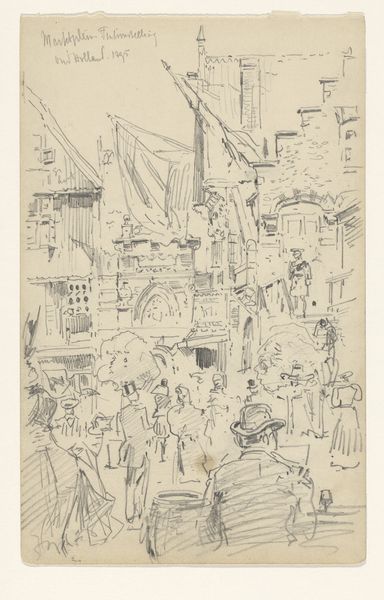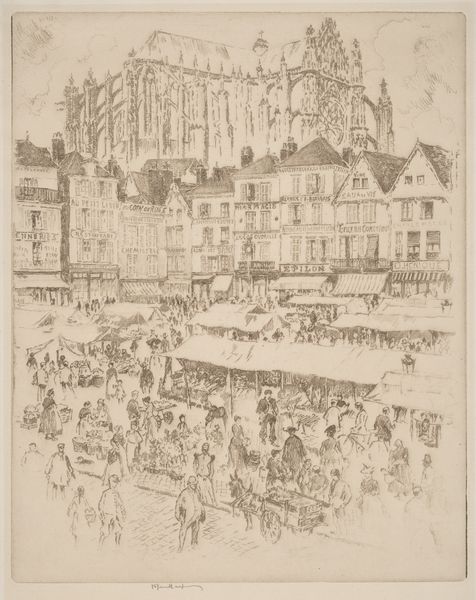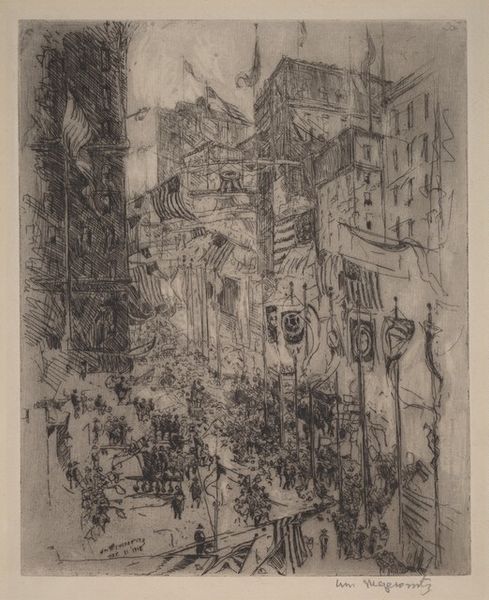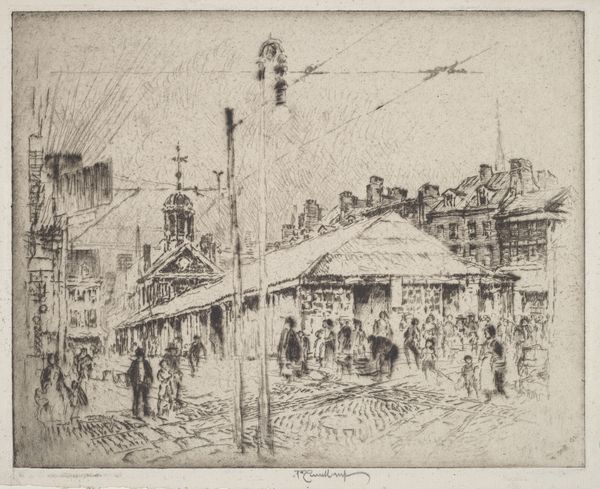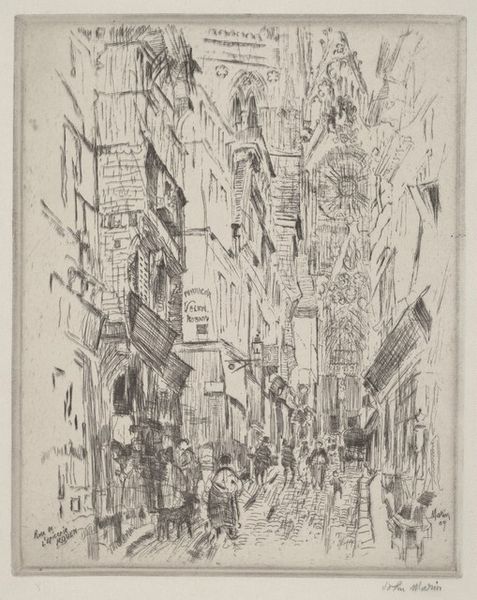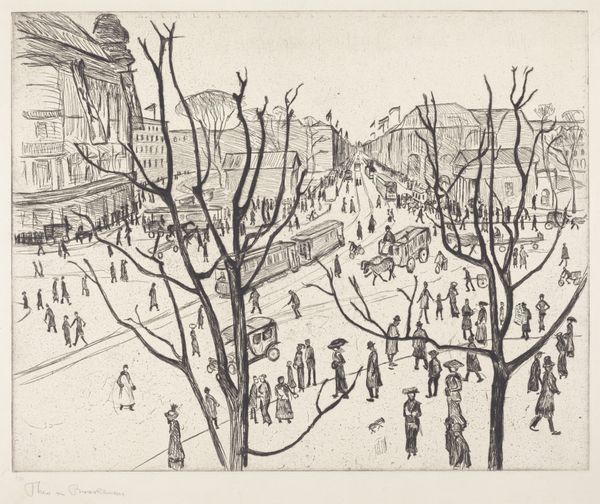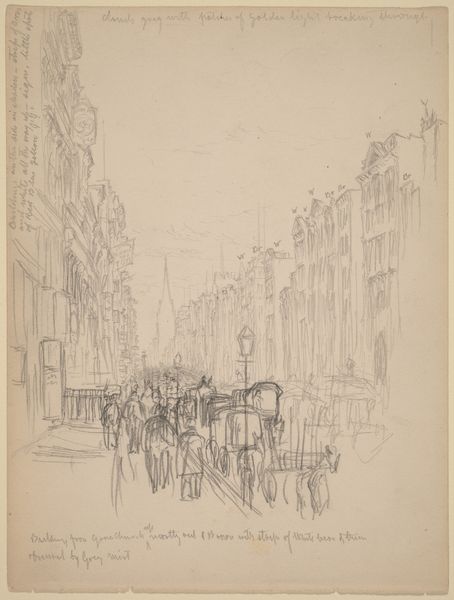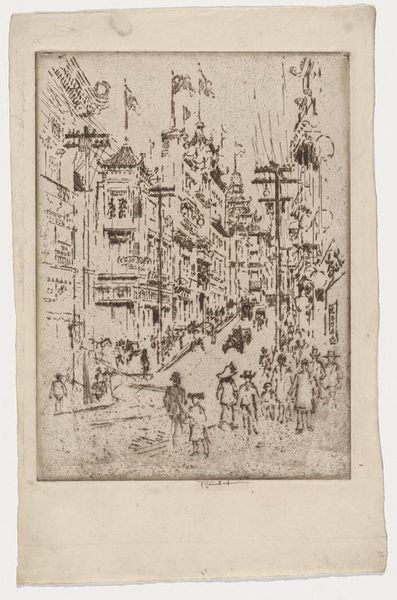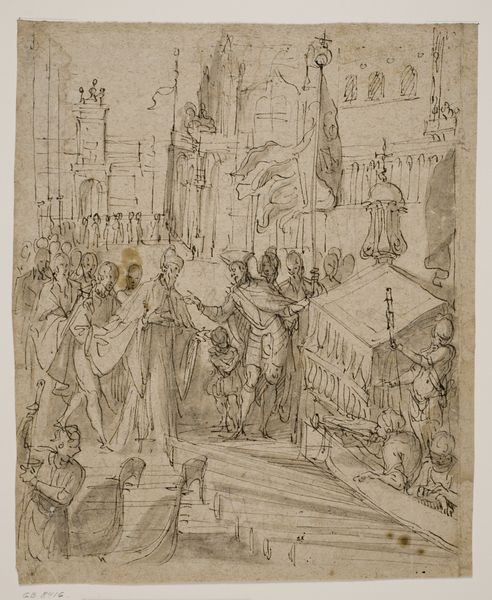
Copyright: National Gallery of Art: CC0 1.0
Curator: Immediately, there's a palpable sense of urban bustle—a compressed frenzy conveyed through these incredibly fine, almost vibrating lines. Editor: We're looking at "New Oxford Street, London" by Joseph Pennell, created in 1893. It's an etching and drawing rendered in ink. Pennell was an American expatriate, deeply influenced by Whistler, capturing the dynamism of burgeoning cities. Curator: Dynamism is right. Look at how he uses the hatching and cross-hatching to suggest movement. The receding perspective funnels our gaze, intensifying the density. It’s as though the street itself is exhaling a collective breath. Editor: Pennell made this at a pivotal moment when London was the heart of the British Empire. Mass transit, expanding commerce, and growing social divides are embedded in this depiction. The density is less a formal choice and more a faithful representation of its evolving role. Curator: Perhaps, but the formal choices cannot be dismissed! Note how the lamppost anchors the composition, serving as a visual barrier that heightens the impression of depth, while the light values are critical to creating the atmospheric perspective. Pennell directs our focus with deliberate starkness and subtlety. Editor: Yet the etching medium lends itself perfectly to his aim: portraying not just visual facts, but capturing the transient conditions of modern life for different social classes. Notice how some of the wealthier are in carriages while many others appear to be on foot or haggling at the many street shops of the area. Curator: I find the expressiveness far more profound than merely social record-keeping. The artist orchestrates a harmony out of chaos, revealing a certain aesthetic tension intrinsic to modern urban existence through line, value, and composition. Editor: Yes, the formal structure enables the historical record—together they show not merely how the city looks, but how London felt at the end of the Victorian era: bustling and a bit disorienting, full of commerce and culture on the precipice of great change. Curator: A productive analysis! The tension between representation and feeling makes it a striking composition, doesn’t it? Editor: It gives viewers much to reflect upon in its subject, and through his distinctive rendering.
Comments
No comments
Be the first to comment and join the conversation on the ultimate creative platform.
